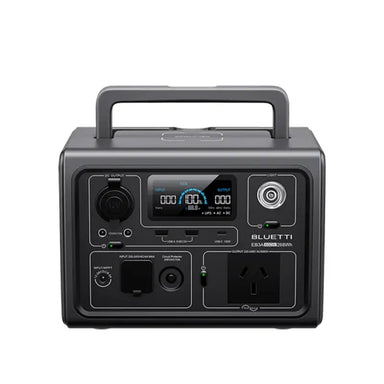 Save $550.00
Save $550.00
BLUETTI AC180P
Bluetti AC180P Portable Power Station - Power You Can Always Rely On Designed for both indoor and outdoor scenarios, AC180...
View full detailsTrading : 7am to 5pm (Mon-Sun)
Call Us : (03) 7071 0777
Email Us : sales@primalhunter.com.au
NEED HELP?
Hours: 7am-5pm (Mon-Sun)
Ph: (03) 7071 0777
E:sales@primalhunter.com.au
Never run out of power on your Aussie adventures with our Portable Power Stations.
Charge your devices, run your camp essentials, and power up wherever your journey takes you—whether you’re camping, hiking, or simply off the beaten track.
Shop now and stay ready for adventure, anytime, anywhere.
Not sure which portable power station is right for you? You need one that gets the job done—without blowing your budget on overkill. Check out our blog below to discover how to find the perfect power station for your needs.
Feel free to also check out our FAQs section at the bottom of the page if you're seeking answers for any general questions.

 Save $550.00
Save $550.00
Bluetti AC180P Portable Power Station - Power You Can Always Rely On Designed for both indoor and outdoor scenarios, AC180...
View full details Sale
Sale
Designed to Up-level Your Outdoor Experience Elevate your on-the-go power solutions with the BLUETTI AC70P Power Station! ...
View full details Backorder Available
Backorder Available
Important Notice: The BLUETTI EB3A Portable Power Station is gradually being phased out and discontinued. For a comparable alternative, check out t...
View full details Save $1,160.00
Save $1,160.00
Versatile Power Solution for Every Need Compact, reliable, and powerful, the Premium 200 V2 is nicely built to meet your p...
View full details Save $910.00
Save $910.00
Power On, Rain or Shine. The outdoor-friendly build and IP65 water and dust-resistance ensure resilience against rain, mud...
View full details Save $820.00
Save $820.00
Ready for 99% of Devices The AC200P L delivers 2,400W rated power, covering most loads in your RV or at home. Activate the...
View full details Sale
Sale
Lighter, Faster, And More Freedom BLUETTI AC2P is an extraordinarily lightweight and user-friendly energy storage solution...
View full details Save $900.00
Save $900.00
Swap Seamlessly for Endless Runtime Keep multiple battery packs on standby and replace them for constant power anytime. Wh...
View full details Sale
Sale
Efficient, Portable, and Powerful The BLUETTI AC50P power station is something you can flaunt at your camping group. It f...
View full details Backorder Available
Backorder Available
Important Notice: The BLUETTI EB70 Portable Power Station is gradually being phased out and discontinued. For a comparable alternative, check out t...
View full detailsA portable power station that can run a refrigerator typically needs to supply at least 300 to 800 watts of continuous power, depending on the fridge size and efficiency. For most small to medium fridges, a power station with a pure sine wave inverter and a minimum 500Wh capacity is recommended to ensure stable operation. Always check your fridge’s wattage and surge requirements, and match it to the power station’s output specs. For best results, choose a unit with enough runtime to handle your fridge for several hours—especially during outages or off-grid trips.
The portable power station you need depends on what devices you plan to run and for how long. For small electronics like phones, lights, and cameras, a 150–300Wh unit may be sufficient. For larger gear like laptops, CPAP machines, or small appliances, look for 500–1000Wh. To run high-demand devices like fridges, power tools, or microwaves, you’ll need a 1000Wh+ station with higher output wattage and surge capacity. Always match the power station’s output (watts) and battery capacity (Wh) to your specific needs for reliable performance.
How long a portable power station lasts depends on two factors: battery capacity (measured in watt-hours) and the power draw of the devices you're running. For example, a 500Wh power station can run a 50W device for roughly 10 hours. Lifespan-wise, most lithium-ion power stations last 500–2,000 charge cycles, which can translate to several years of regular use. High-quality models with lithium iron phosphate (LiFePO₄) batteries tend to last even longer. Always check both runtime estimates and battery cycle life when choosing a unit.
You can charge a portable power station in three main ways: wall outlet (AC charging), solar panels, or car charger (DC charging). Most units come with an AC adapter for plugging into a standard wall socket, which is usually the fastest method. For off-grid use, compatible solar panels can recharge the unit using sunlight—ideal for camping or emergencies. Many models also support charging from a 12V car outlet while you drive. Charging times vary depending on the method and the power station’s capacity, so always refer to the manufacturer’s specs.
A portable power station stores electrical energy in an internal battery and converts it into usable power through built-in inverters and outlets. You charge it via AC power, solar panels, or a car charger, and then use it to run or recharge your devices—like phones, laptops, or small appliances—anywhere, anytime. Its compact design and multiple output options (AC, USB, DC) make it a versatile, reliable off-grid power solution.

